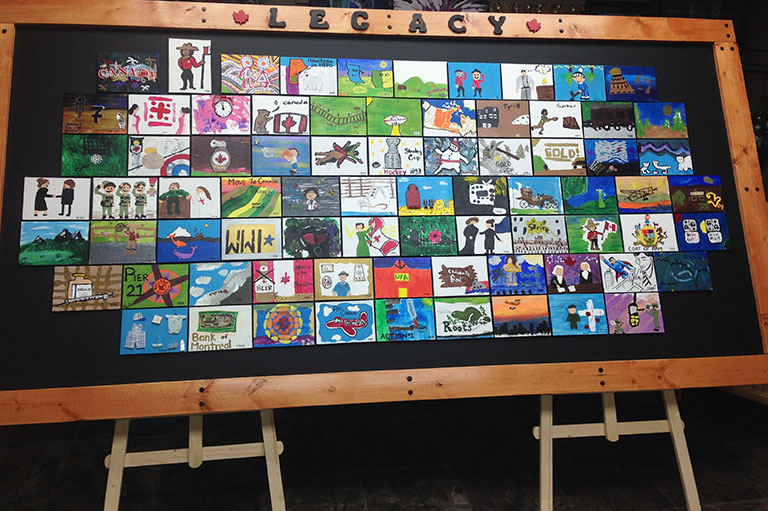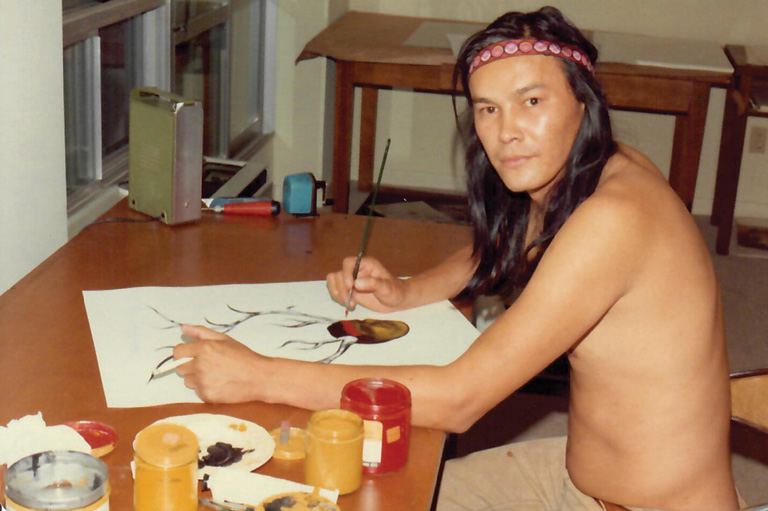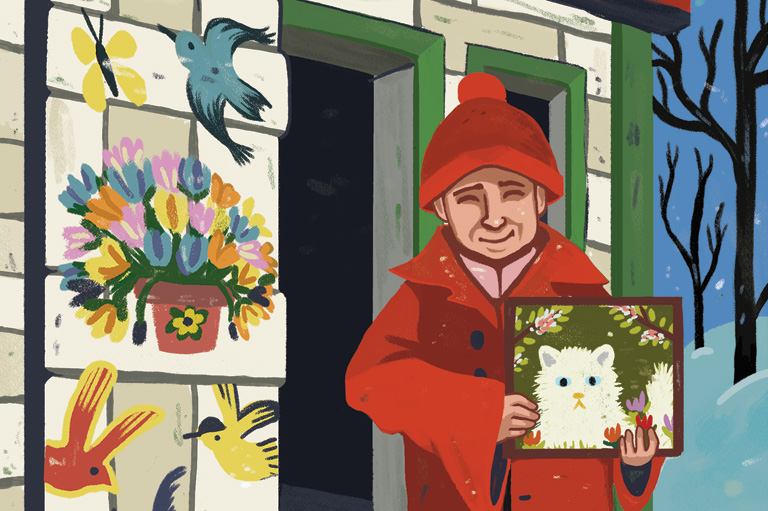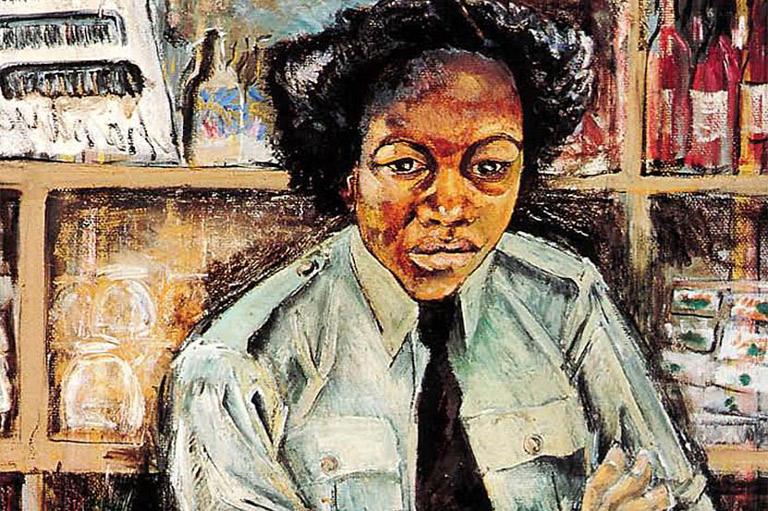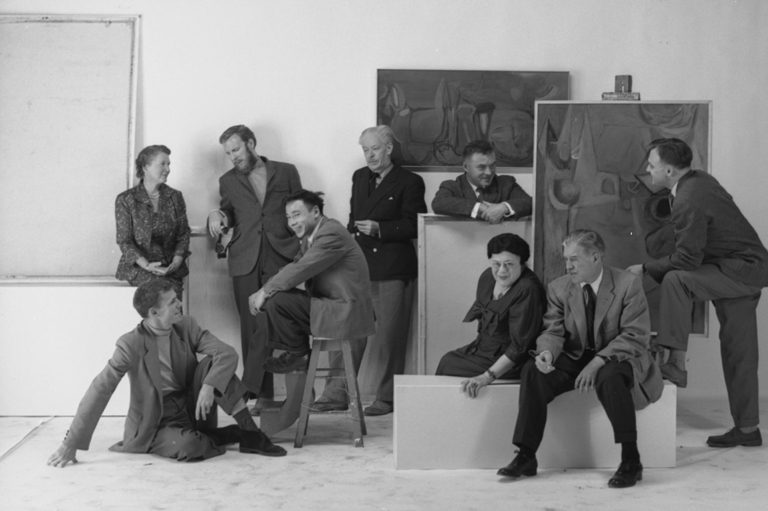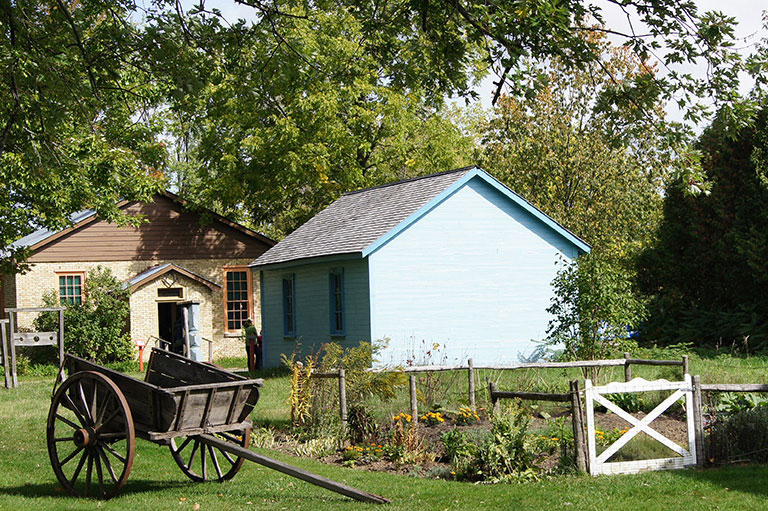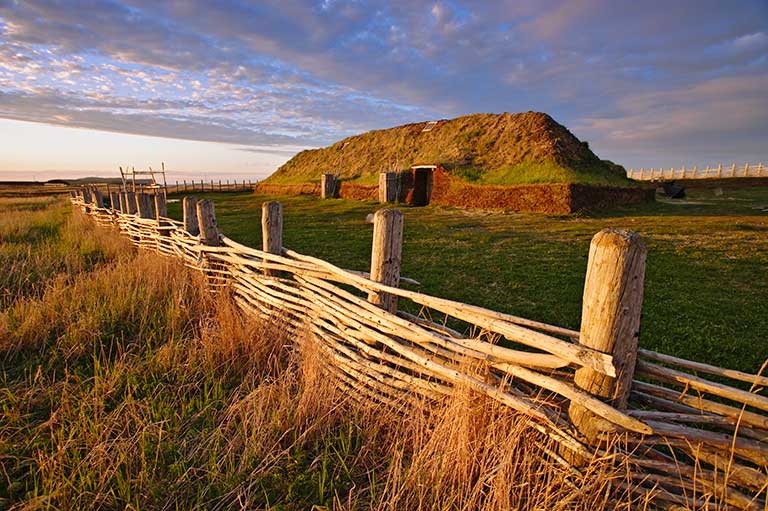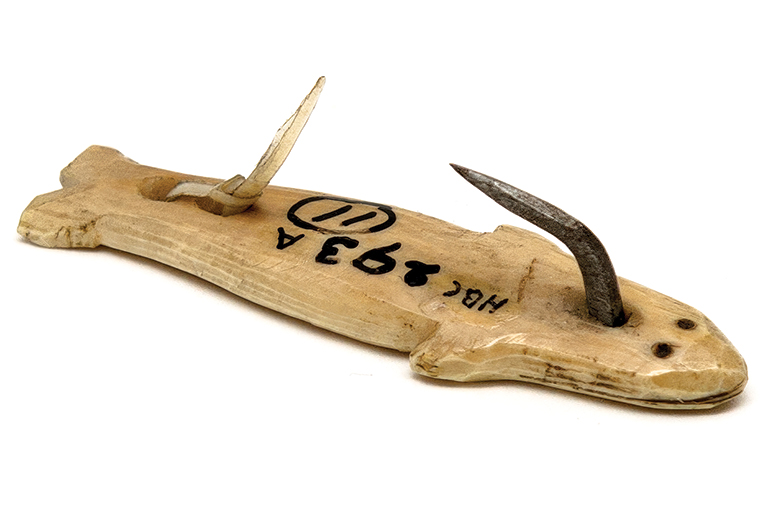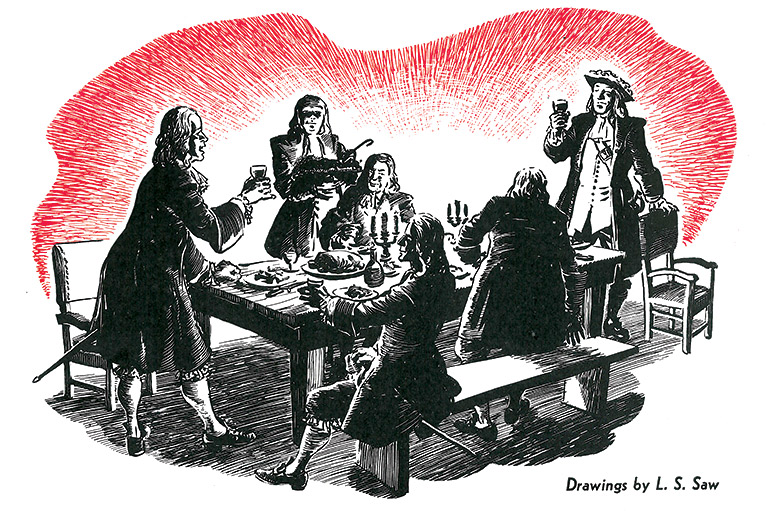William Notman: Photographic Pioneer
-
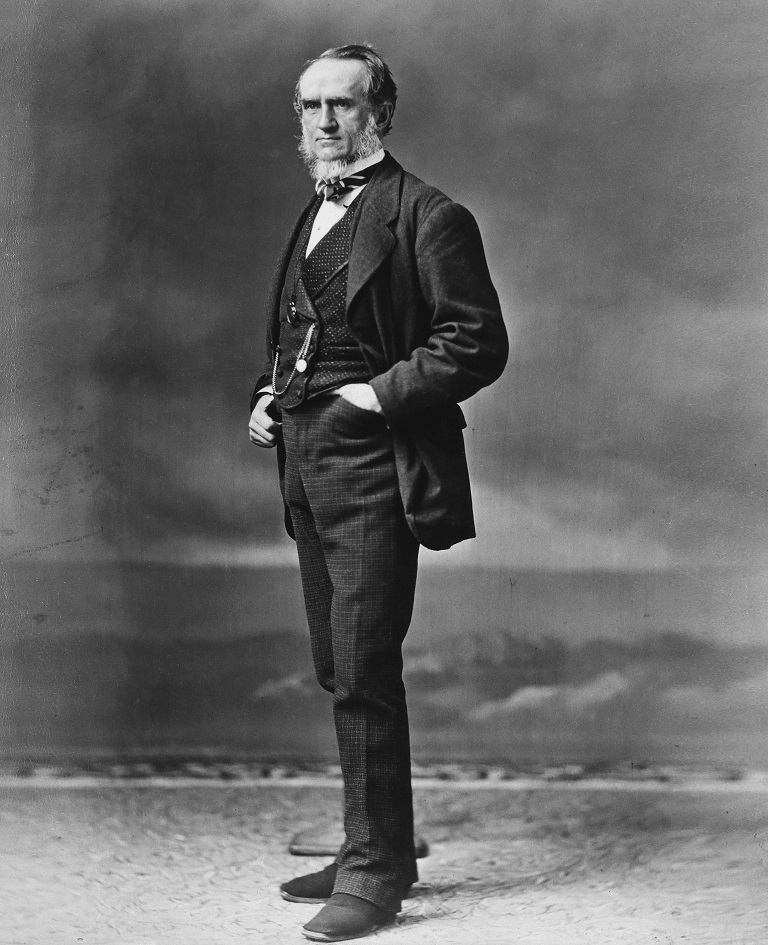 William Notman, 1875. William Notman was both a chronicler of high society and a pioneer of photographic techniques.McCord Museum
William Notman, 1875. William Notman was both a chronicler of high society and a pioneer of photographic techniques.McCord Museum -
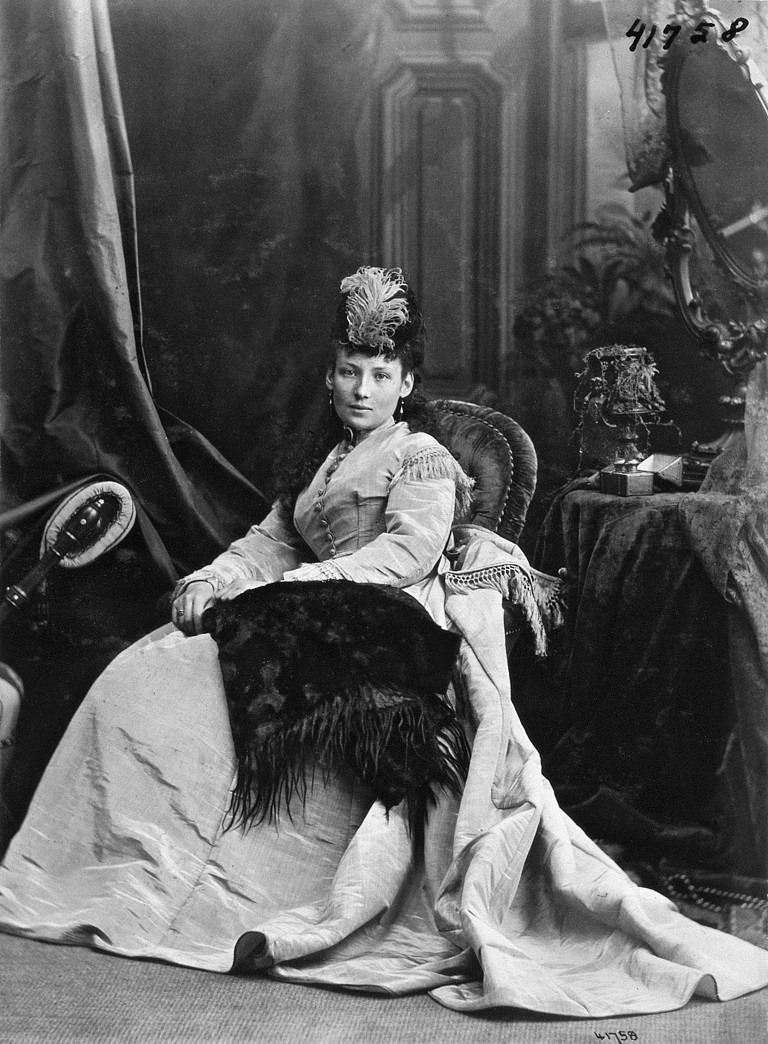 WIlliam Notman photographed upper-class men and women in rich surroundings, but also too pictures of ordinary people, nature and the construction of Montreal's Victoria Bridge.McCord Museum
WIlliam Notman photographed upper-class men and women in rich surroundings, but also too pictures of ordinary people, nature and the construction of Montreal's Victoria Bridge.McCord Museum -
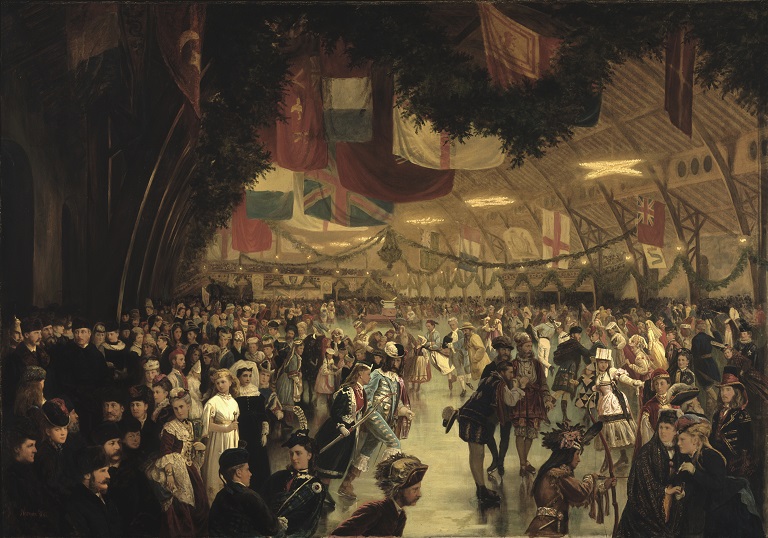 Skating Carnival. More than 300 individual photographs were painstakingly assembled and painted to create this famous composite image. William Notman/Henry Sandham, Edward Sharpe, Victoria Rink, 1870.McCord Museum
Skating Carnival. More than 300 individual photographs were painstakingly assembled and painted to create this famous composite image. William Notman/Henry Sandham, Edward Sharpe, Victoria Rink, 1870.McCord Museum -
 Jean-Louis and Marie-Angélique Riel, who were born in Montana while their father, Louis Riel, was in exile after the Red River Resistance.Library and Archives Canada
Jean-Louis and Marie-Angélique Riel, who were born in Montana while their father, Louis Riel, was in exile after the Red River Resistance.Library and Archives Canada -
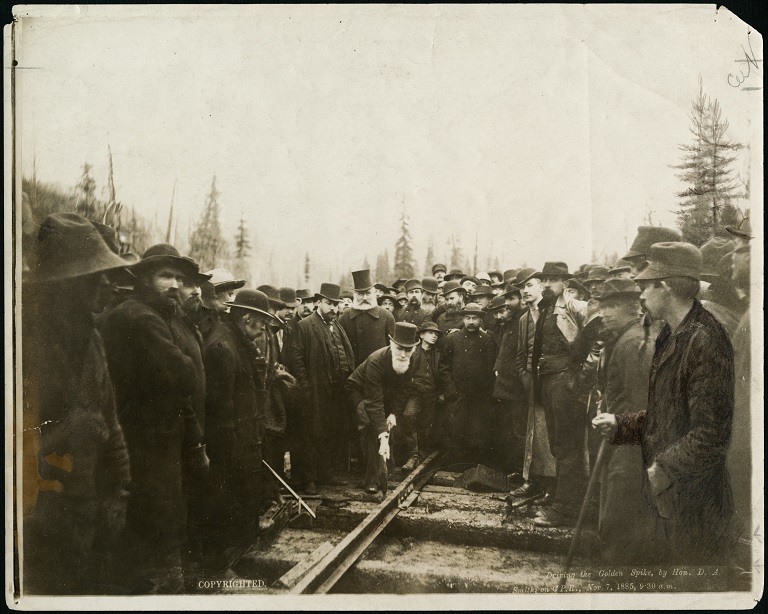 Look closely behind financier Donald Smith as he drives the last spike and you'll see young Edward Mallandaine, who rode a railway flatcar the night before to get in on the historic event.Library and Archives Canada
Look closely behind financier Donald Smith as he drives the last spike and you'll see young Edward Mallandaine, who rode a railway flatcar the night before to get in on the historic event.Library and Archives Canada
His techniques predated Photoshop by about a century, but just because we can achieve in a few clicks what would have taken William Notman days of painstaking photography, painting, and literal cutting and pasting, should make his legacy more impressive, not less. William Notman: Visionary Photographer is the first-ever retrospective of his work. The exhibition at the Canadian Museum of History originated with the McCord Museum in Montreal, which holds a large collection of Notman’s images.
The skill and creativity evidenced in his unique large-scale compositions is breathtaking. The exhibition shows the process Notman used to combine individual photographs into group portraits featuring a gentlemen’s snowshoeing club, the Montreal Hunt Club or the Princess Louise Dragoon Guards. Each image would be cut out and added to the background and the result photographed to create a seamless whole.
Sometimes Notman included painted elements, blurring the line between different kinds of portraiture to place dozens of people at the same grand ball or social event. Indeed, artifice was central to much of Notman’s work — he was an expert at faking photos of winter activities in his studio.
When the family textile business ran into trouble in Scotland, Notman fled to Canada in 1856 to avoid fraud charges. He set up his photography business in Montreal, becoming, in the exhibition’s words, “a superb networker.” He won the commission to photograph the construction of the city’s Victoria Bridge, expanded his business to Toronto, Ottawa and Halifax, and became an increasingly sought-after society portrait photographer. By 1872 he had twenty-six studios around North America, 19 of them in the United States.
Although Notman also photographed nature and urban scenes, the images he has left us of everyone from prominent churchmen and politicians to ordinary Canadians are an invaluable record of our past. The wary gaze of the soon-to-be-assassinated Thomas D’Arcy McGee, the artificially created merriment of a mass skating scene, the penetrating stare of Sitting Bull, and the stiff formality of young women pretending to drink tea — through Notman’s work, they reach out across the decades and hold us transfixed in front of their portraits.
After visiting the Notman exhibition, be sure to take a few minutes to explore a compact but rewarding exhibition from Library and Archives Canada, A Little History. In a few thought-provoking and rarely displayed artifacts, it provides a distinctive, often unsettling perspective on our past, through the eyes of children. Reading a letter from Louis Riel to his children on the day of his execution jolts the viewer into realizing the humanity and pain of the controversial Manitoban; seeing a picture of David Suzuki and his family as Second World War internees is a reminder of how close we are to the shame of past racism. Amid the sobering paintings, diaries, and letters, there is humour, too—the presence of eleven-year-old Edward Mallandaine in the famous photo of the Last Spike proves that photobombing, too, has a long history.
Themes associated with this article
Advertisement
You might also like...

Canada’s History Archive, featuring The Beaver, is now available for your browsing and searching pleasure!

